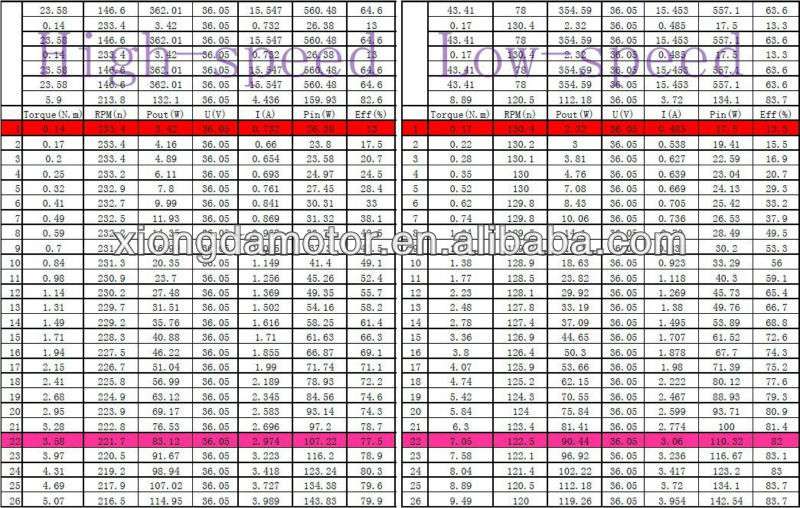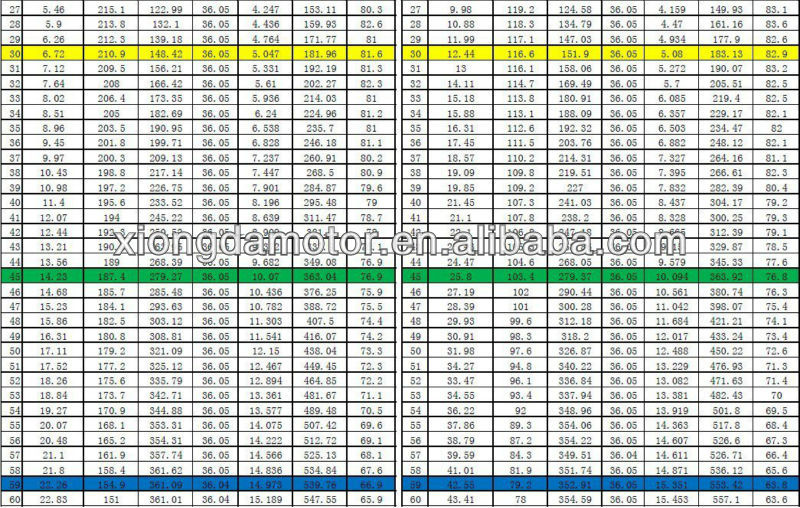I've been experimenting a bit with a number of different motors & controllers of Far Eastern origin - and found that the stated power of both motors & controllers is, well, at best - made up!
I have an Arduino logging voltage, current (both accurately calibrated) & Temperature.
The nominal power of a motor is usually defined as the continuous output (mechanical) power or in simple terms the motors continuous rated power / its efficiency. There are several definitions of continuous rated power - but it's often the power level at which the motor does not exceed 40C in a 25C ambient temperature.
I can't find much data on Efficiency of eBike motors - but what I can says up to 60% at low speed, dropping to 40% at max rpm. Thus, it might be safe to assume the nominal output power is 60% of the input power.
To test, I have:
350w 36V BLDC Wheel Motor.
250W 36v BLDC Wheel Motor.
500W, 36-48V Speed Controller
350W, 36-48V Speed Controller
250W, 36-48V Speed Controller
Powered from a 36.0V, 50A Switch Mode power Supply.
Driving a torque regulated load.
First using the 350W Motor
500W controller - the continuous power (Volts * Amps) into the controller measured 392W at 36.0V, 10.88A.
350W controller - the continuous power 377W
250W controller - the continuous power 280W
Using the 250W Motor
500W controller - the continuous power 390W
350W controller - the continuous power 369W
250W controller - the continuous power 267W
So, pretty close to the 350W results.
Assuming 60% efficiency (I really need to measure this accurately) the peak mechanical power output of the 350W motor is only 235W and the 250W motor, 234W
At max RPM, these figures potentially drop to somewhere around 156W
I imagine the results would be closer with more 'reputable' suppliers.
Although the Police may use the power stamped on the motor as a guide to whether a bike is legal, the regulation states 'nominal' power which MAY be significantly lower than this value. It means there is a possibility of motors of up to 500W actually being legal based on nominal power, regardless of what it says on the can! [But do not take it as black and white that yours is without measurement!]
I have an Arduino logging voltage, current (both accurately calibrated) & Temperature.
The nominal power of a motor is usually defined as the continuous output (mechanical) power or in simple terms the motors continuous rated power / its efficiency. There are several definitions of continuous rated power - but it's often the power level at which the motor does not exceed 40C in a 25C ambient temperature.
I can't find much data on Efficiency of eBike motors - but what I can says up to 60% at low speed, dropping to 40% at max rpm. Thus, it might be safe to assume the nominal output power is 60% of the input power.
To test, I have:
350w 36V BLDC Wheel Motor.
250W 36v BLDC Wheel Motor.
500W, 36-48V Speed Controller
350W, 36-48V Speed Controller
250W, 36-48V Speed Controller
Powered from a 36.0V, 50A Switch Mode power Supply.
Driving a torque regulated load.
First using the 350W Motor
500W controller - the continuous power (Volts * Amps) into the controller measured 392W at 36.0V, 10.88A.
350W controller - the continuous power 377W
250W controller - the continuous power 280W
Using the 250W Motor
500W controller - the continuous power 390W
350W controller - the continuous power 369W
250W controller - the continuous power 267W
So, pretty close to the 350W results.
Assuming 60% efficiency (I really need to measure this accurately) the peak mechanical power output of the 350W motor is only 235W and the 250W motor, 234W
At max RPM, these figures potentially drop to somewhere around 156W
I imagine the results would be closer with more 'reputable' suppliers.
Although the Police may use the power stamped on the motor as a guide to whether a bike is legal, the regulation states 'nominal' power which MAY be significantly lower than this value. It means there is a possibility of motors of up to 500W actually being legal based on nominal power, regardless of what it says on the can! [But do not take it as black and white that yours is without measurement!]
Last edited:




